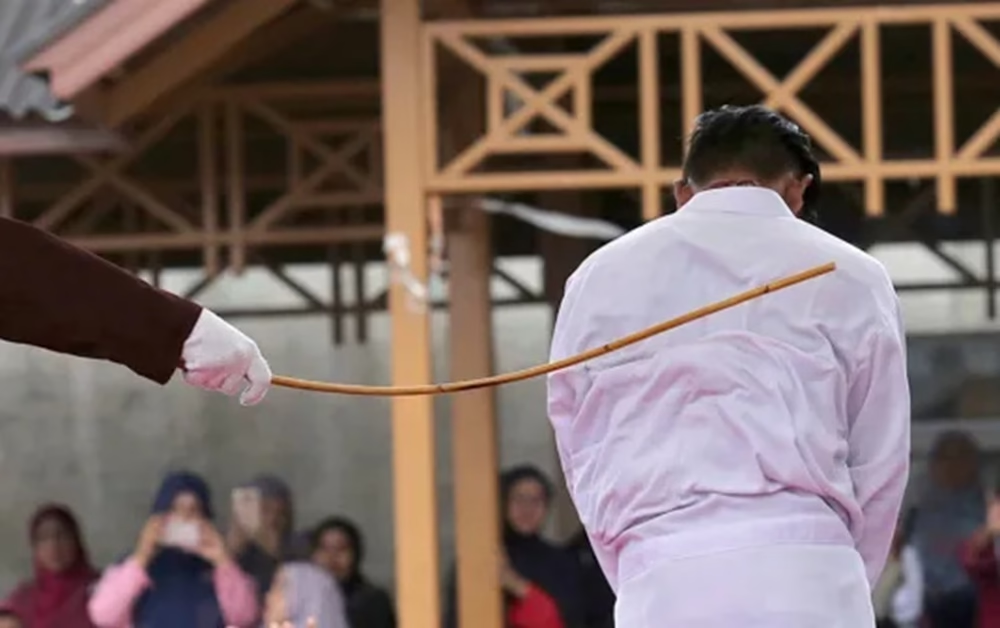SINGAPORE – Those who commit scams and scam-related offences could face the cane under proposed changes to Singapore’s criminal law, local media reported on Tuesday. Under the proposed law, scammers and those who join or recruit for scam syndicates could receive between six and 24 strokes of mandatory caning.
Offenders who launder scam proceeds, or who supply national ID credentials or mobile SIM cards to scammers, could face up to 12 strokes. People who fail to take reasonable steps to prevent their credentials from being used for scams may also be caned.
The idea was first raised in March during the Home Affairs Ministry’s budget debate. The government has stepped up efforts to tackle scams that target residents.
In September, the Home Affairs Ministry warned Meta of a possible fine of up to S$1 million, and up to S$100,000 per day after the end of the month, if it did not roll out measures such as facial recognition to curb impersonation scams on Facebook. Caning for scammers would start at six strokes and could reach 24, depending on the offence.
The Straits Times reports that the tougher penalties follow the passing of the Criminal Law (Miscellaneous Amendments) Bill in Parliament on 4 November. At the Bill’s second reading, Senior Minister of State for Home Affairs Sim Ann said scams are the most common crime in Singapore, accounting for 60% of all reported offences.
She noted that from 2020 to the first half of 2025, there were about 190,000 reported cases, with losses of about S$3.7 billion. She added, These are staggering numbers, and said the losses exceed 3½ times the cost of building Woodlands Health Campus.
Police data shared with The Straits Times estimated that at least S$187.1 million was lost to scams from July to September.
Caning in Singapore
Caning is a longstanding form of corporal punishment in Singapore’s justice system, reflecting a strict stance on law and order. It involves judicial flogging with a rattan cane, usually on the bare buttocks, and applies only to male offenders. Women are exempt.
The practice dates back to British rule, then was codified and widened under Singapore’s modern Criminal Procedure Code (CPC). Here are the key points, from law to practice and public debate.
Legal basis
- Governing laws: The CPC, mainly Sections 325 to 332, and various statutes set out when caning is mandatory or discretionary. The last major updates were in the 1990s, with no significant changes recorded as of 2025.
- Constitutional status: Article 10(3) of the Constitution permits corporal punishment for males aged 16 to 50. It is constitutional in Singapore, despite criticism from international rights groups.
When caning is used, Caning is not usually imposed on its own. Courts often order it alongside jail terms or fines. It covers a wide range of offences aimed at deterrence. Common applications include:
| Offence type | Examples | Mandatory caning | Usual range of strokes |
|---|---|---|---|
| Violent crimes | Rape, robbery with violence, causing grievous hurt | Yes for males | 3 to 24 (rape often 12 to 20) |
| Drug offences | Trafficking certain amounts of controlled drugs | Yes | Up to 15 |
| Vandalism | Damage to public property, such as paint or markers | Yes, in some cases, for higher-value damage | About 3 to 8 |
| Sexual offences | Outrage of modesty, voyeurism, and obscene materials | Discretionary | About 3 to 12 |
| Secret societies and gangs | Unlawful assemblies, secret society membership | Discretionary | About 6 to 12 |
| White-collar and other | Cheating, immigration fraud, drink-driving, and causing injury | Discretionary | About 1 to 6 |
| Military and prisons | Offences under the SAF Act or Prison Act | Yes, for certain offences | Up to 24 |
- Exemptions: Females, males under 16 or over 50, and those medically unfit, certified by a doctor, are exempt. Changes in 2023 narrowed mandatory caning for some youth cases, though it remains in place for adults.
- Frequency: In 2024, the Prisons Department reported around 1,200 judicial canings a year, a decline from peaks in the 2000s. Authorities attributed this to preventive policing, rather than policy change.
Procedure and administration
- Before caning: A medical officer examines the offender. If fit, caning is scheduled within weeks of sentencing.
- How it is carried out: Trained prison officers administer caning in a controlled setting using a rattan cane about 1.2 metres long and roughly 1.27 centimetres thick. The offender is secured on a trestle in a prone position. Strokes are spaced to reduce shock.
- Timing: Each stroke takes seconds. Sessions last about 5 to 20 minutes.
- Medical oversight: A doctor is present and can halt proceedings. Aftercare is provided, since wounds, including lacerations and bruising, can take one to three weeks to heal. Antibiotics are commonly given to lower infection risk.
- High-profile cases: Michael Fay, an American teenager, received four strokes in 1994 for vandalism, reduced from six after US lobbying. British national Oliver Fricker received six strokes in 2010 for graffiti. These cases brought global attention but did not change policy.
International and domestic context
- Global criticism: Groups such as Amnesty International and Human Rights Watch characterise judicial caning as torture under the UN Convention Against Torture, which Singapore has not ratified. Critics say it is degrading and too harsh for some non-violent offences.
- Singapore’s position: Leaders have long argued it deters crime. Low rates of violent crime are often cited. Public support remains strong, with polls in 2022 suggesting backing from a clear majority.
- Recent developments, as of Nov 2025: There is no active move to abolish caning. Policy work has focused on community-based sentences for minors. A 2024 Law Ministry review reaffirmed caning’s role amid concern over youth offending.
Despite its legal acceptance, caning is often criticised for its harshness and the potential for it to perpetuate the normalisation of physical violence in society.















